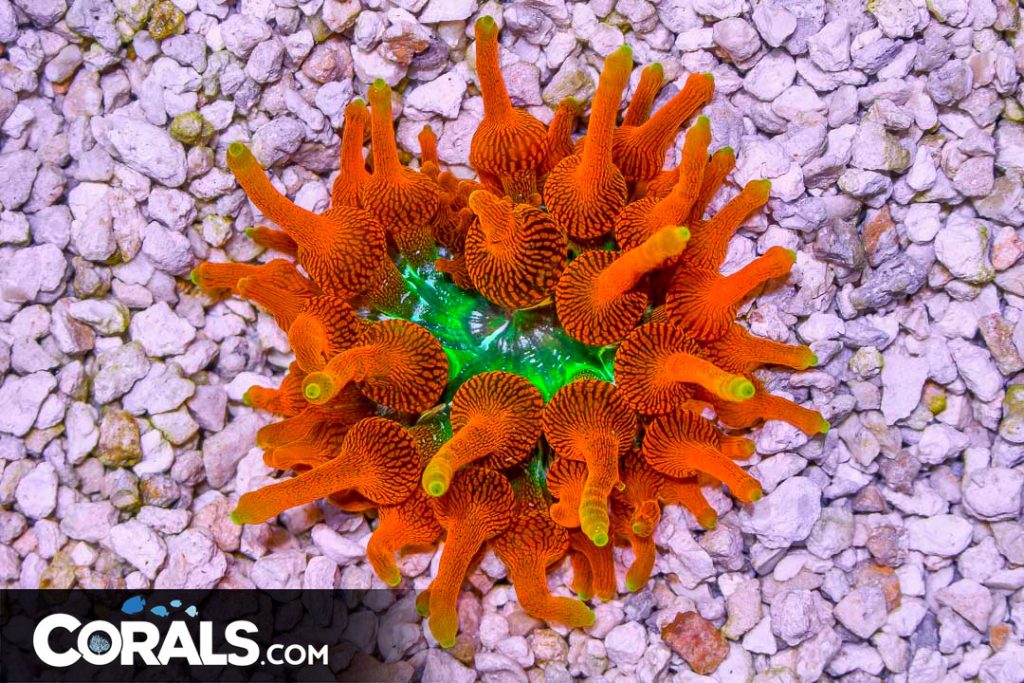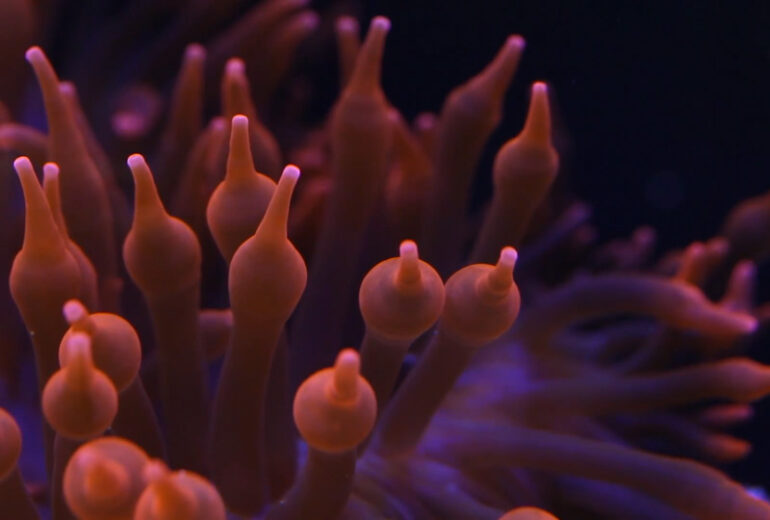When we are asked which anemone we recommend for reef aquaria the answer is simple – 100% The Red Bubble Tip Anemone. We’ve worked in many fish stores and when people keep marine fish for the first time they all want the dream, a pair of Clownfish in an anemone. For years it has been a big no-no as it inevitably will end in failure but now such is the hardiness, and prolific nature of red bubble tips, we think it would actually be difficult for some to get their care wrong. And there’s a whole world of difference between captive propagated bubble tips and other species that have been wild-collected.
The Bubble tip anemone, Entacmaea quadricolor, belongs to the family Actiniidae and comes from the Indo-Pacific and the Red Sea. It stays small at less than 12” in diameter and is popular because of its pink and red color variations and the swelled-up, bulb-like tentacles that give it its name. The bubbles themselves are an interesting point of contention among aquarists as many captive bubble tips either develop few or no bubbles at all, in stark comparison to pictures of anemones displaying hundreds of them in the wild.
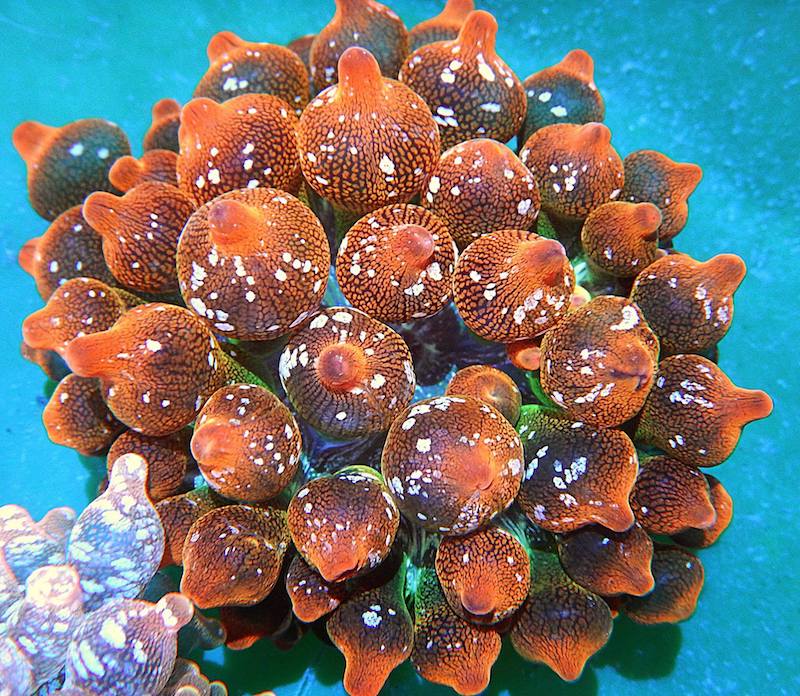
Some sources say that this is down to if the anemone is hosting a clownfish or not, the water depth, and the amount of light that it is exposed to, with those in shallow, brightly lit natural waters exhibiting the most bubbles and those in dimly lit water exhibiting none, with long, more usual looking tentacles instead. If this is true then most of us are keeping our “nems” in dimly lit aquaria by comparison, as few Bubble tips display many bubbles in the aquarium. But that doesn’t stop them from thriving.
Wild green Bubble tip anemones are available and are inexpensive and fairly straightforward to keep. Wild red bubble tips are sometimes available too but are expensive in comparison to those available in shops via local “breeders.” Wild Entacmaea quadricolor are still much easier to keep than any Heteractis spp. and Stichodactyla spp, most of which should be avoided, but captive propagated specimens from other reefer’s tanks are downright easy, as easy to keep as some beginner corals.
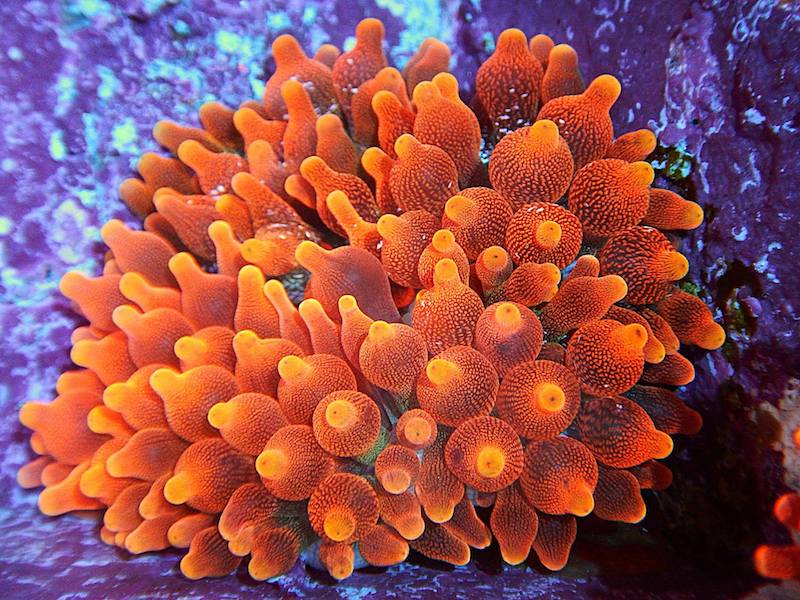
Aquarium care
It should go without saying that every coral or anemone requires the same temperature, salinity, alkalinity, calcium, and magnesium as natural seawater, but captive bubble tips seem less fussy about nitrate levels. Any reef spec LED light over 40 watts is fine to illuminate them and royal blue LEDs really make them pop. Look out for color variants with rainbow colors in their center. Twenty times turnover should be good for them and with that light and flow, most are happy in the center ground of the aquarium. That’s a par reading of about 150-200.
The old adage is that if an anemone “walks” around the aquarium, it isn’t happy with either light, flow, or both, although Red Bubble tips rarely if ever walk, and that can be down to where you place them in the first place. All anemones need somewhere secretive to put their foot and retract into if threatened by a predator. For bubble tips, this can be a crevice or small cave in some rocks, and sometimes they will even choose a rear-facing location and then poke through a gap in the rocks to get to the light. If it can’t protect its foot and itself, that is more likely to make it walk than inadequate flow or light.
We choose where we want our bubble tips to go, hold them over that place for about 10 minutes, and for the last 10 years or so they have stayed exactly where we put them, in multiple tanks. We even put them in before other corals so that if they do walk, they won’t destroy every coral in their paths. Let them settle and be happy, then place corals a minimum of two inches away when fully extended and they can be pretty accommodating reef residents.
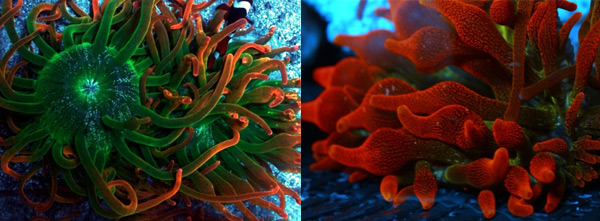
Reproduction
The problem for many red bubble tip owners is not keeping them alive, it’s what to do when they multiply. In the aquarium the most frequent form of propagation is asexual, where they literally split over the course of 24 hours and your one Bubble tip becomes two. This is thought to happen more when Iodine is being dosed although we know many bubble tip owners who have never consciously dosed Iodine and have produced dozens of clones.
Sometimes they may stay as two or three but in some aquariums, they may become 12 or more and we recently saw our LFS rehome about 100 from one standard-sized reef aquarium. It turned into a nem tank. The best part is though that stores do take them in, offering small sums in exchange, but those super hardy tank-propagated nems go on to the next person and so on. There should be no need for wild ones.
Feeding
We never purposefully feed our bubble tip anemones anything, presuming that they are taking much of their energy from their zooxanthellae instead. They are accomplished at capturing frozen foods like artemia from the water column or if they are hosting a clownfish, the clown will feed it for you. Feeding whole fish is unnecessary and should be avoided.

Clownfish partners
E.quadricolor is a tempting host indeed in the wild and hosts up to 14 species of clownfish including A.clarkii, frenatus, melanopus, ocellaris and Premnas biaculeatus, now Amphiprion biaculeatus. Five of those six species can become pretty psychotic in defense of their hosts, however, so beware. We have been bitten many times.
Color morphs
Bubble tip anemones can be highly variable in their color so it’s worth looking out for more unusual ones under blue light. As we said previously, rainbow coloration can be seen in the centers of some while others may turn bright pink, sunburst orange, or red, yellow, and green.
